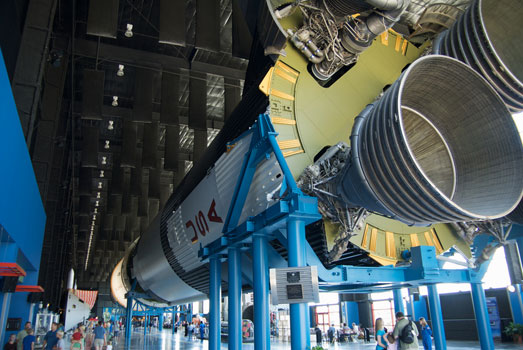Earlier this month, NASA’s Kepler mission announced that it had discovered the first crop of Earth-sized planets orbiting stars other than our own sun. Five of those Earth-sized planets orbit stars similar to our own sun and have orbits that make it possible to have a range of surface temperatures similar to the range on Earth.
But how will we one day reach these next potential outposts for human life? The solar system’s nearest stellar neighbor, Alpha Centauri, sits 4.5 light years away. Voyager I, currently the farthest human-made object outside our solar system, will have to travel for another 50,000 years before it enters the neighborhood of the stars.
But worry not, space enthusiast, because DARPA, the Defense Advanced Research Projects Agency, is already making plans for future interstellar travel.
In mid-January, along with NASA’s Ames Research Center, DARPA hosted the 100-Year Starship Study Strategic Planning Workshop with 27 thinkers from DARPA, NASA, futurist organizations and even a few science fiction writers in San Francisco.
The workshop’s goal, according to a DARPA press release, “was to steer efforts to develop a business model, establish a charter and develop the organizational construct needed to affect this long-term strategy.” DARPA’s Dave Neyland said, “We picked the 100-Year Starship name because it would require a long-range sustainable effort to get our species to other stars.” He added, “We’re here because we’d like to start with a mechanism that gets this long-range project out of the government, and make sure it is an energized and self-sustaining enterprise.”
Though DARPA had no comment beyond its press release, TPM contacted Marc Millis who attended the event as a representative of the Tau Zero Foundation, “a volunteer group of scientists, engineers, entrepreneurs, and writers who have agreed to work together toward practical interstellar flight,” according to Tau Zero’s website.
“For me, [the workshop] was déjà vu, since so much of this I’ve discussed already with other colleagues of mine with similar backgrounds. It was nice, however, to see some folks that I’d either never met or had not seen in way too many years,” Millis told TPM vie email.
In a blog post for the Tau Zero Foundation, Millis outlined what was discussed during the two day conference. Millis wrote that the workshop focused on “creating an organization that could last for 100-years, rather than about the technological and sociological advancements necessary to eventually create starships.”
Exactly how to create a century-long organization boiled down to three questions: why go to the stars; what kind of organization is optimal; and what will an organization need to succeed.
Workshop attendees came up with five possible reasons to fly to the stars: survival, contacting new life, human evolution, discovery and spiritual beliefs. After voting, most attendees believed personally believed human evolution would be the important reason to go to the stars, but they felt that the public would be mostly motivated by discovering alien life.
Some of the milestones the workshop suggested as intermediate steps to the stars were landing humans on Mars (ideally within in ten years) and developing a life support system that could keep humans alive for generations on a closed ship.
In the end, for Millis, the workshop’s most important accomplishment was “raising awareness through the media coverage of the challenges and investigations toward interstellar flight. It got people’s hopes up that such work might actually be supported.”
The workshop is only part of a more general DARPA/NASA Ames initiative to create more private interest and financing of future space shuttles. Last October, Ames Director Simon Worden announced the project in a talk to longnow.org. “We’ve just started a project with DARPA, it’s called the 100-year starship. The idea is we’re going to try to set-up little mini-grants and set up a program that will begin to invest in the technologies that get us in one hundred years a starship. I think it can be done.”






